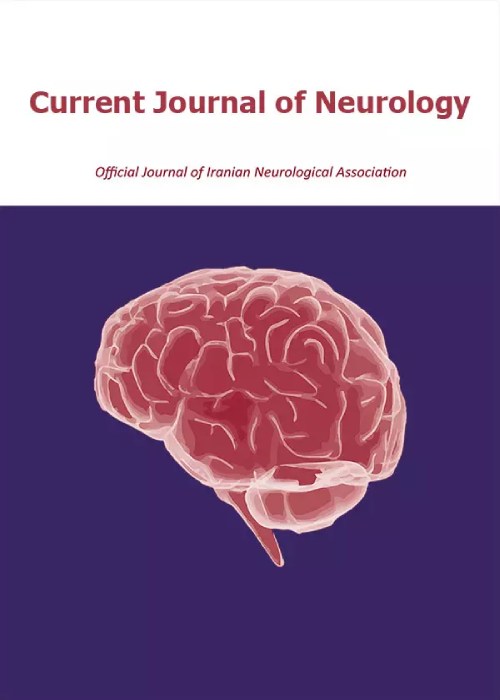Safety assessment of anticoagulation therapy in patients with hemorrhagic cerebral venous thrombosis
Author(s):
Abstract:
Background
Anticoagulation therapy is a routine treatment in patients with hemorrhagic cerebral venous thrombosis (CVT). However, fear of hemorrhagic complications and deterioration course following anticoagulation often disturbs the responsible physician.Methods
This was a Prospective observational study on consecutive CVT patients with hemorrhagic venous infarction or subarachnoid hemorrhage (SAH) admitted in Ghaem Hospital, Mashhad, Iran, during 2006-2012. The diagnosis of CVT in suspected cases was confirmed by magnetic resonance imaging/magnetic resonance venography (MRI/MRV), and computerized tomography (CT) angiography following established diagnostic criteria. Demographic data, clinical manifestations from onset to end of the observation period, location of thrombus, location and size of infarction and hemorrhage, and clinical course during treatment were recorded. Choice of the treatment was left to the opinion of the treating physician. Clinical course during 1 week of treatment was assessed based on the baseline modified National Institute of Health Stroke Scale (NIHSS) score. Three or more points decrease or increase of modified NIHSS after 1 week of treatment was considered as improvement or deterioration courses, respectively. Other clinical courses were categorized as stabilization course.Results
102 hemorrhagic CVT patients (80 females, 22 males) with mean age of 38.6 ± 8 years were prospectively investigated. Of the 102 hemorrhagic CVT patients in the acute phase, 52 patients (50.9%) were anticoagulated with adjusted dose intravenous heparin infusion and 50 cases (49.1%) received subcutaneous enoxaparin 1mg/Kg twice daily. Decreased consciousness had a significant effect on the clinical course of the patients (X2 = 9.493, df = 2, P = 0.009). Presence of SAH had no significant effect on the clinical course of our anticoagulated hemorrhagic CVT cases (X2 = 0.304, df = 2, P = 0.914). Extension of Infarction in more than two thirds of a hemisphere had a significant influence on the distribution of clinical courses (X2 = 5.867, df = 2, P = 0.044). Difference in distribution of clinical course among the two groups of our hemorrhagic CVT patients was not significant (X2 = 8.14, df = 1, P = 0.87).Conclusion
Patients with hemorrhagic CVT without other contraindication for anticoagulation should be treated either with dose-adjusted intravenous heparin or body-weight-adjusted subcutaneous low molecular-weight heparin.Keywords:
Language:
English
Published:
Current Journal of Neurology, Volume:12 Issue: 3, Summer 2013
Pages:
87 to 91
magiran.com/p1349010
دانلود و مطالعه متن این مقاله با یکی از روشهای زیر امکان پذیر است:
اشتراک شخصی
با عضویت و پرداخت آنلاین حق اشتراک یکساله به مبلغ 1,390,000ريال میتوانید 70 عنوان مطلب دانلود کنید!
اشتراک سازمانی
به کتابخانه دانشگاه یا محل کار خود پیشنهاد کنید تا اشتراک سازمانی این پایگاه را برای دسترسی نامحدود همه کاربران به متن مطالب تهیه نمایند!
توجه!
- حق عضویت دریافتی صرف حمایت از نشریات عضو و نگهداری، تکمیل و توسعه مگیران میشود.
- پرداخت حق اشتراک و دانلود مقالات اجازه بازنشر آن در سایر رسانههای چاپی و دیجیتال را به کاربر نمیدهد.
دسترسی سراسری کاربران دانشگاه پیام نور!
اعضای هیئت علمی و دانشجویان دانشگاه پیام نور در سراسر کشور، در صورت ثبت نام با ایمیل دانشگاهی، تا پایان فروردین ماه 1403 به مقالات سایت دسترسی خواهند داشت!
In order to view content subscription is required
Personal subscription
Subscribe magiran.com for 70 € euros via PayPal and download 70 articles during a year.
Organization subscription
Please contact us to subscribe your university or library for unlimited access!


